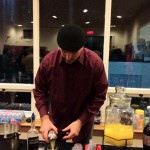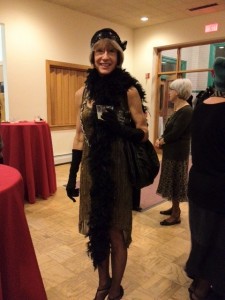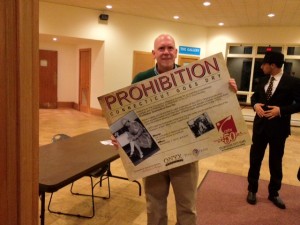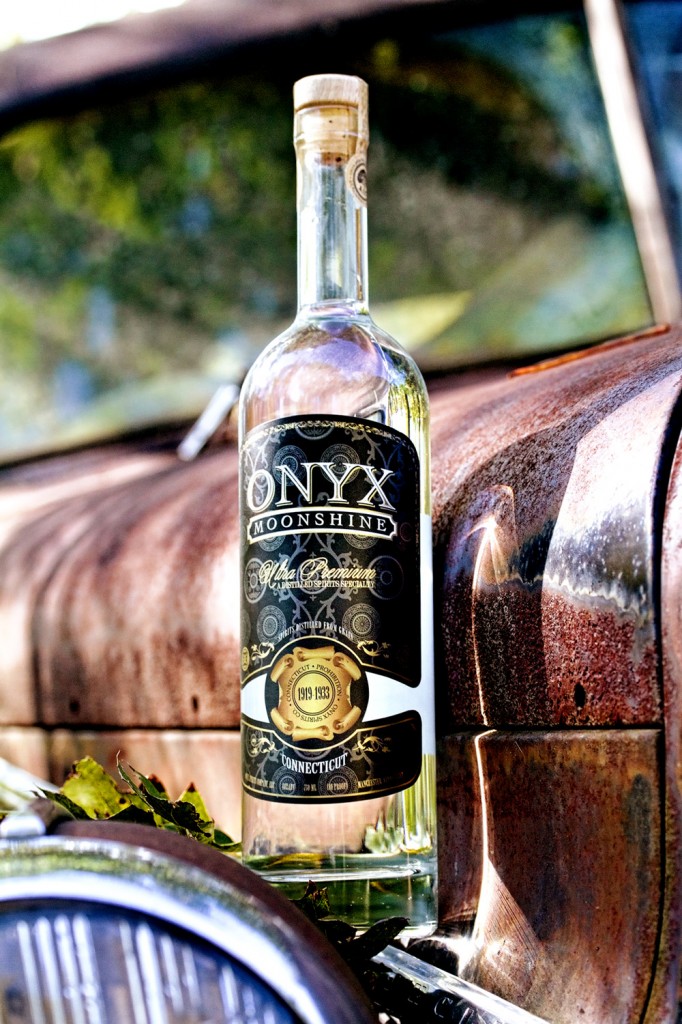Nightcap #5: Onyx Moonshine Secret Stash 2013, Connecticut, USA, price varies
It may not be wine, but we would be remiss not to include a product by this company in our list of worthy nightcaps. Onyx Moonshine is a local success story, and an almost overnight one, at that. The first moonshine to be legally produced and sold in New England, Onyx can now be found on shelves in almost every bar and liquor store in Connecticut. I first discovered this white lightening a year ago at a screening of a documentary about Prohibition in Connecticut where they were pouring drinks made from their moonshine. For an explanation of just what moonshine is and to learn more about their very first product, click here: Connecticut Celebrates the End of Prohibition.
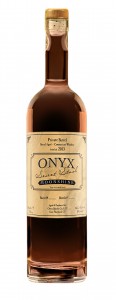 Onyx prepared for an even bigger celebration of Prohibition Repeal Day this year. On December 5th, Onyx released their newest product, Secret Stash, a charred oak barrel-aged moonshine and Connecticut’s very first whiskey. This firewater is now spreading across Connecticut like wildfire. If you want to catch the craze early on, you will need to hurry. A very limited amount of Secret Stash was produced – 33 barrels to be precise – a tribute to the year that Prohibition was repealed. If you’re lucky enough to get your hands on a bottle, you can expect to pay in the area of $60 for it, although price varies depending on the retailer. As if its scarcity and sexy name weren't enough, each of the 33 barrels produced has different flavor notes due to the unique nature of each barrel used and the conditions under which it was made. A list of the 33 restaurants and stores carrying the Connecticut-crafted hooch, complete with each barrel's flavor profile, can be found here: Find Secret Stash.
Onyx prepared for an even bigger celebration of Prohibition Repeal Day this year. On December 5th, Onyx released their newest product, Secret Stash, a charred oak barrel-aged moonshine and Connecticut’s very first whiskey. This firewater is now spreading across Connecticut like wildfire. If you want to catch the craze early on, you will need to hurry. A very limited amount of Secret Stash was produced – 33 barrels to be precise – a tribute to the year that Prohibition was repealed. If you’re lucky enough to get your hands on a bottle, you can expect to pay in the area of $60 for it, although price varies depending on the retailer. As if its scarcity and sexy name weren't enough, each of the 33 barrels produced has different flavor notes due to the unique nature of each barrel used and the conditions under which it was made. A list of the 33 restaurants and stores carrying the Connecticut-crafted hooch, complete with each barrel's flavor profile, can be found here: Find Secret Stash.
If you miss out on the first run, take heart. Onyx plans to release more of their sneaky pete during the summer of 2014. In the meantime, you can grab one of their other home-brewed products as a gift for that special grog guzzler in your life. Visit Onyx Moonshine.
If you snagged a bottle of Secret Stash, you might want to try this cocktail recipe, provided by Onyx Moonshine:
Onyx Maple Manhattan
2 oz Onyx Barrel Aged Whiskey (Secret Stash)
½ oz Maple Syrup
½ oz Sweet Vermouth
Orange rind, for garnish
Combine Secret Stash, maple syrup, and vermouth in a shaker over ice. Twist the orange rind over the mixture to release the orange oil, then rub the orange rind along the rim of the rocks glass. Shake and strain over an ice sphere.
